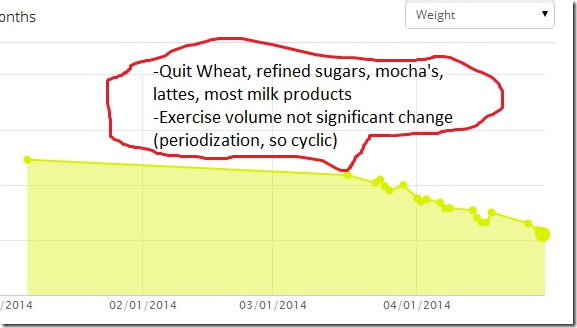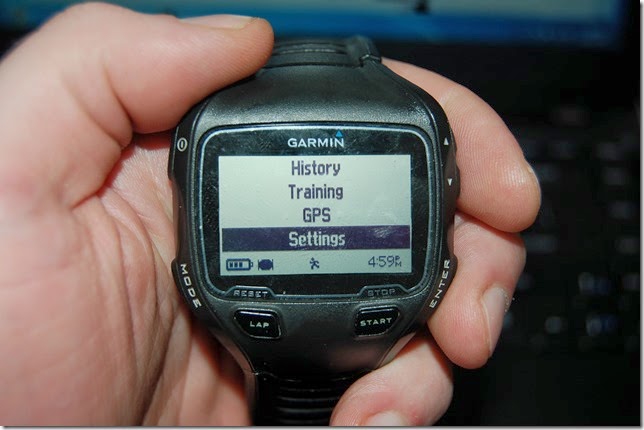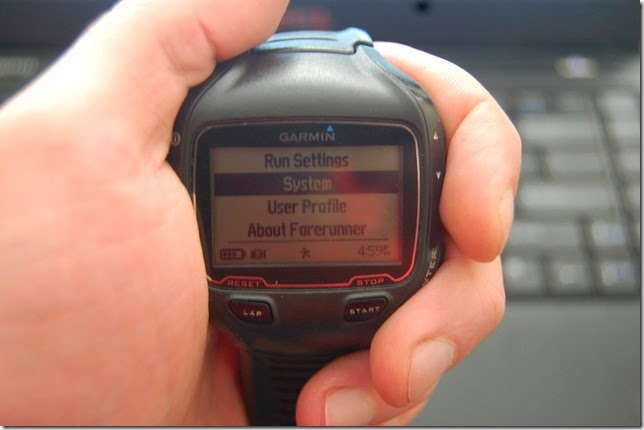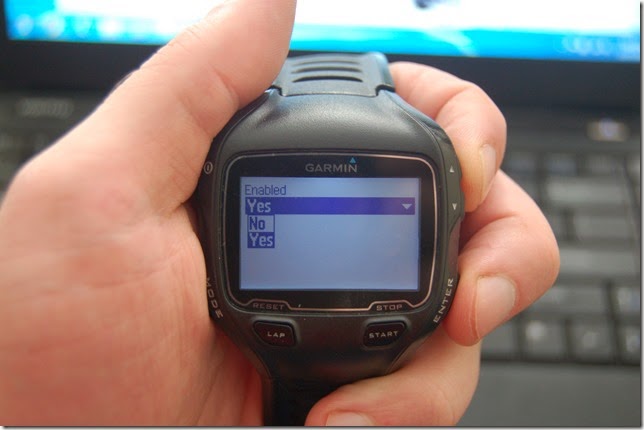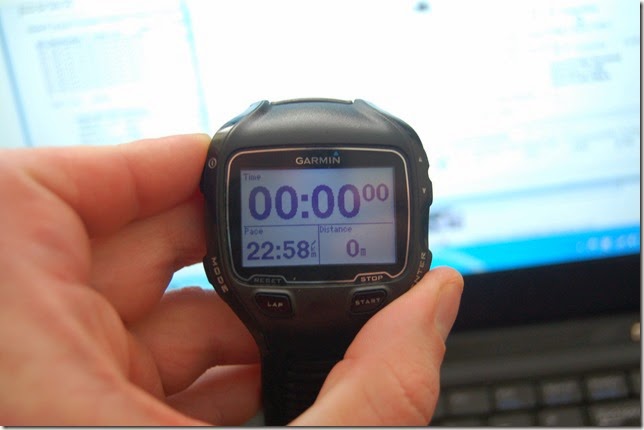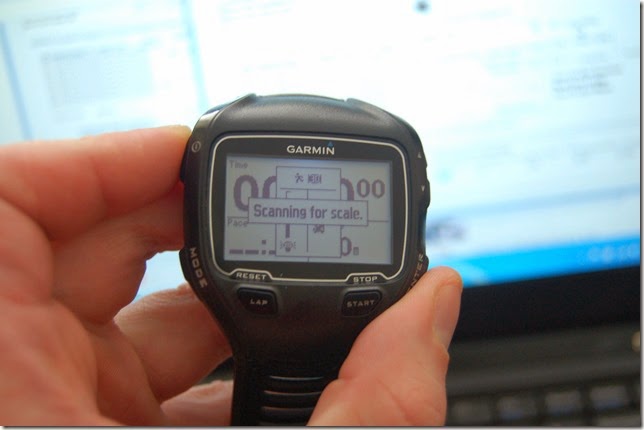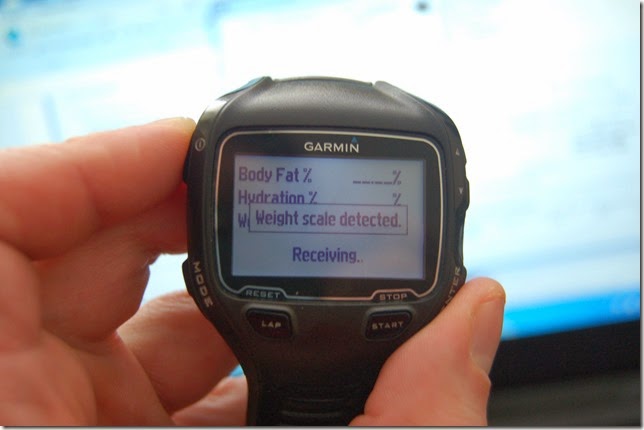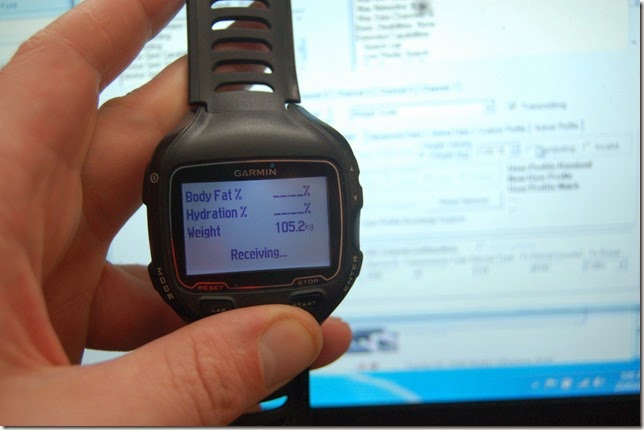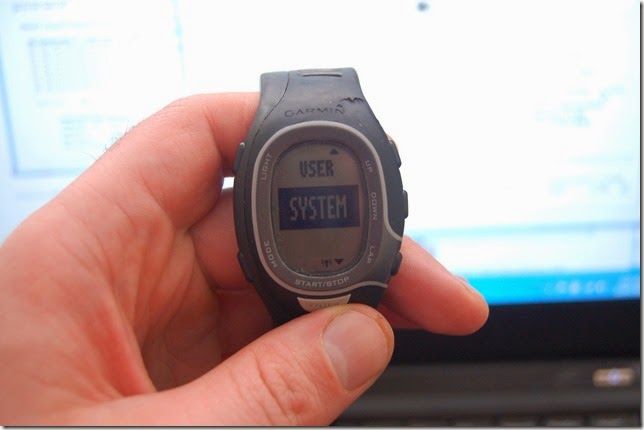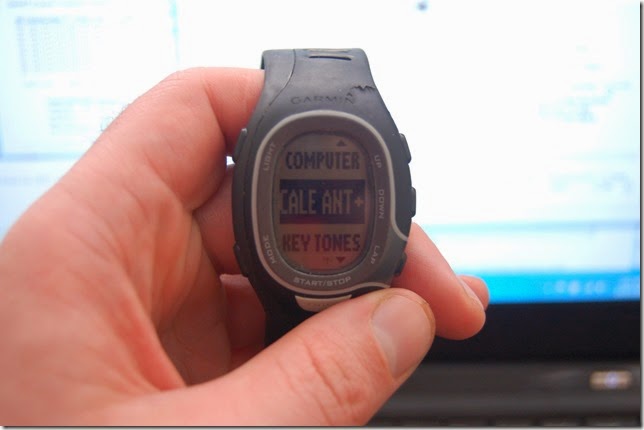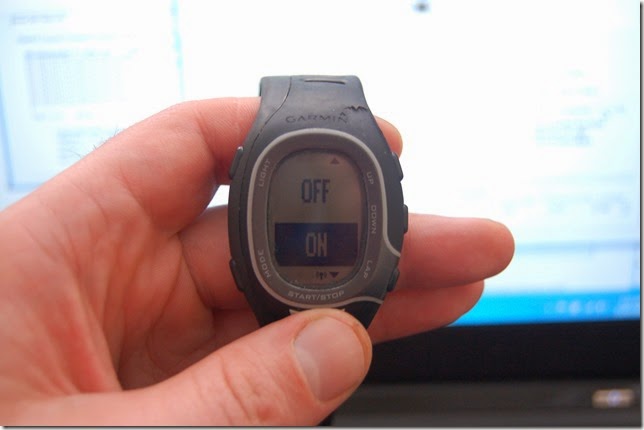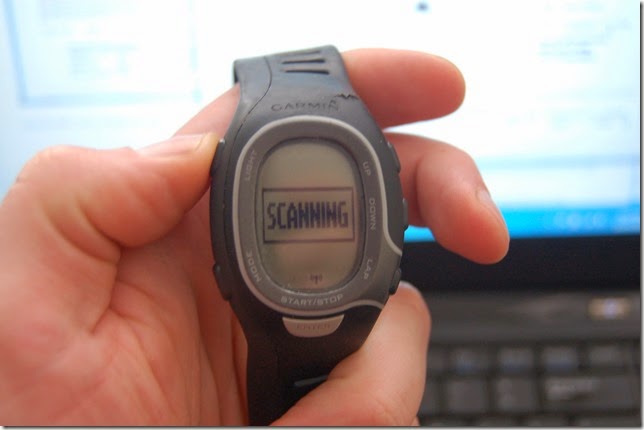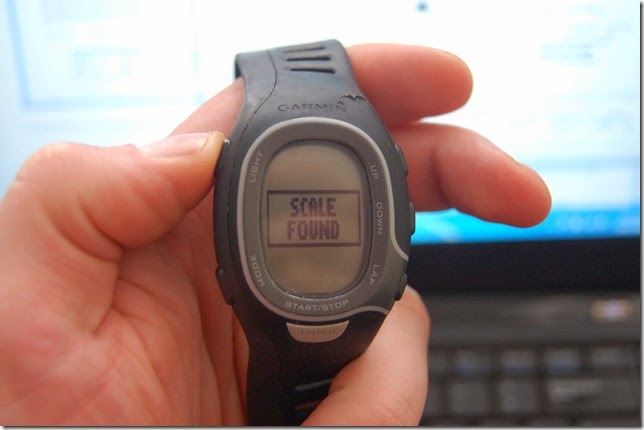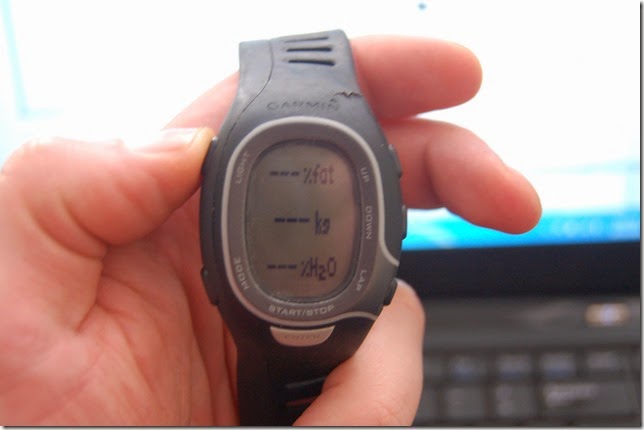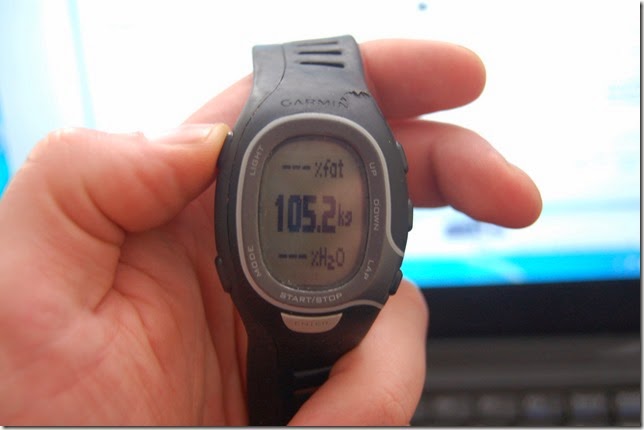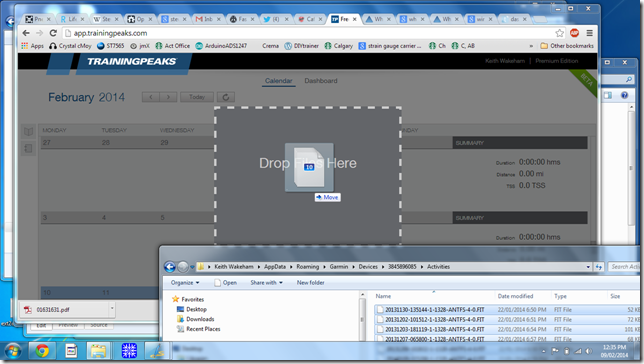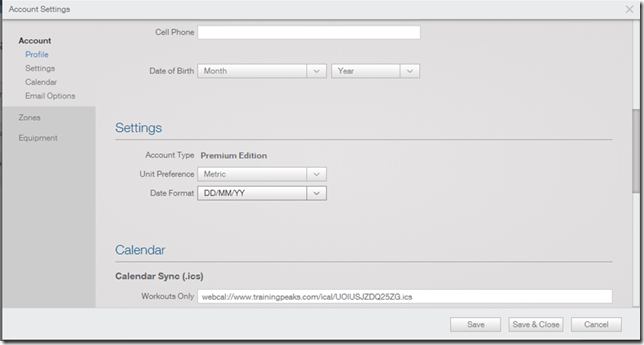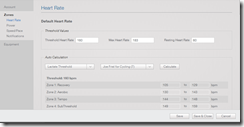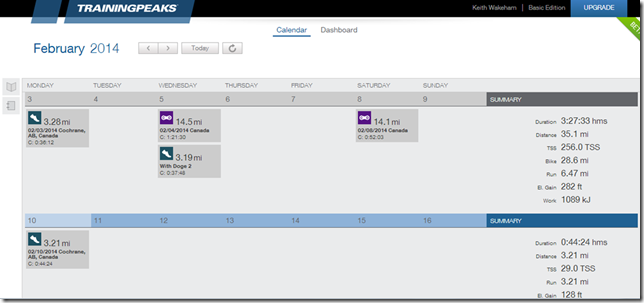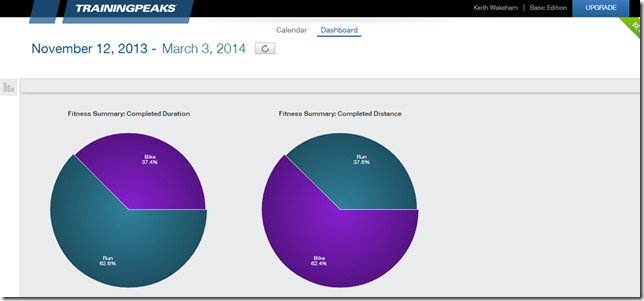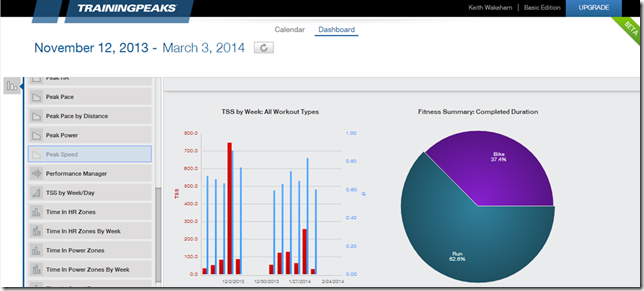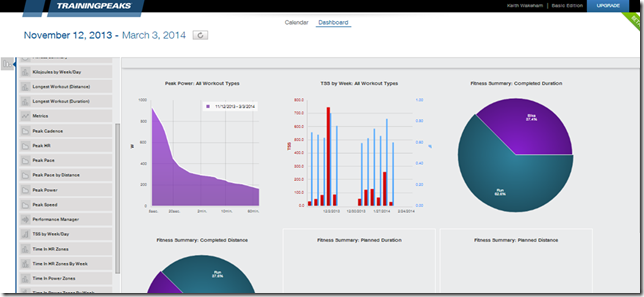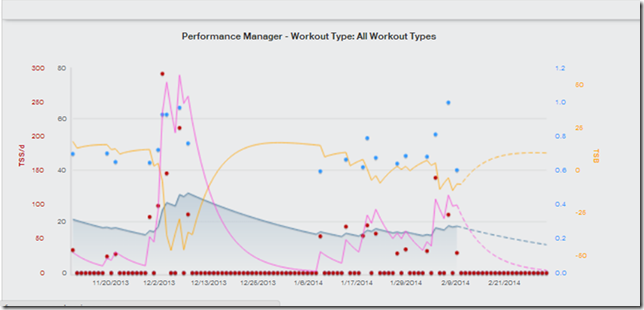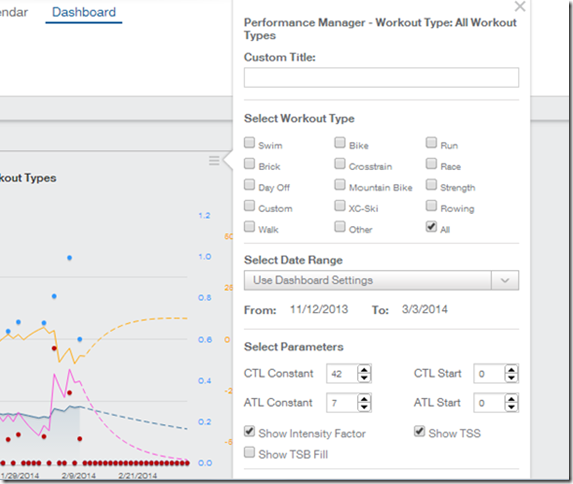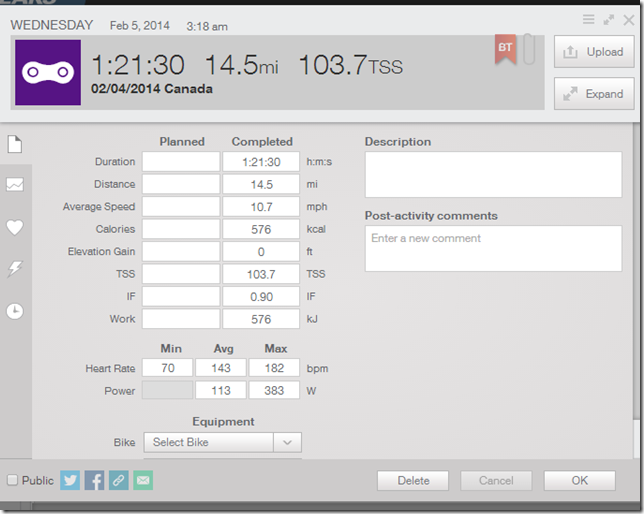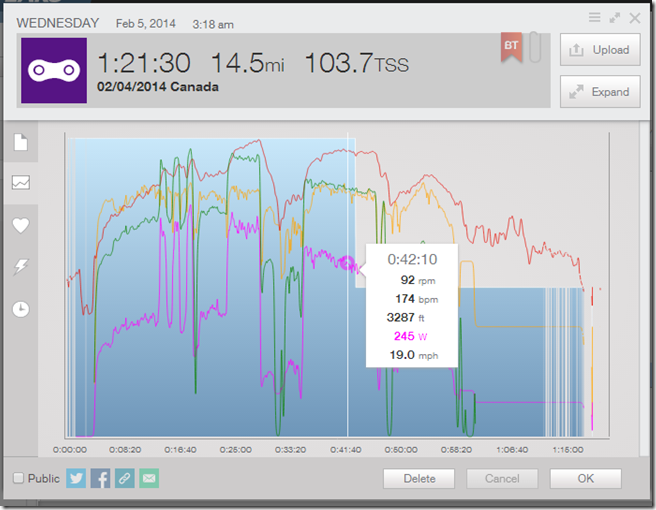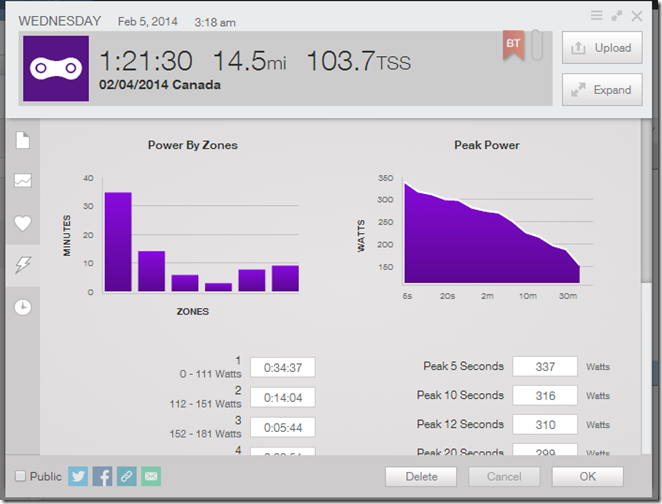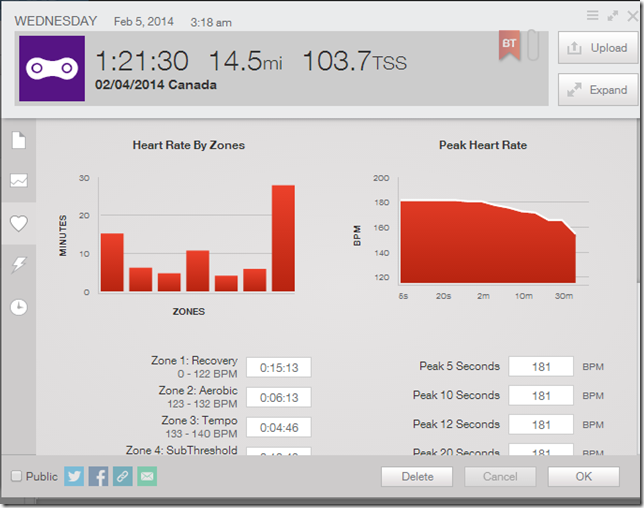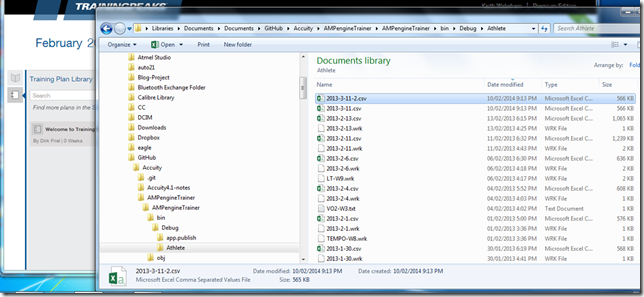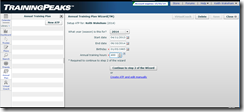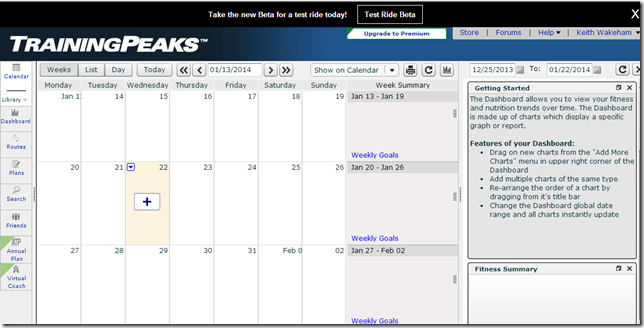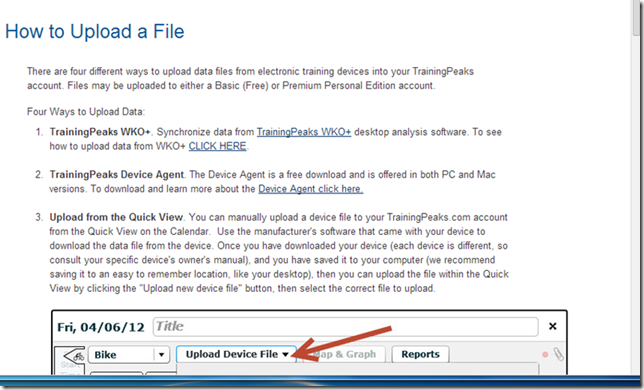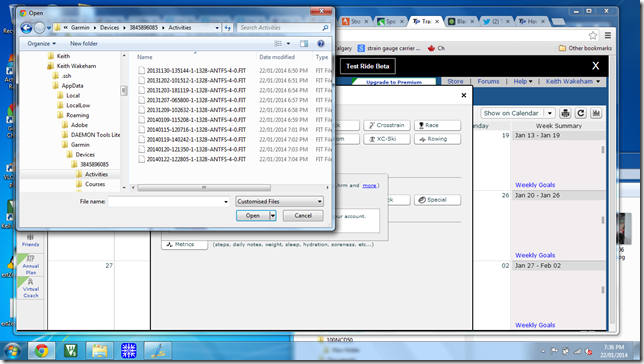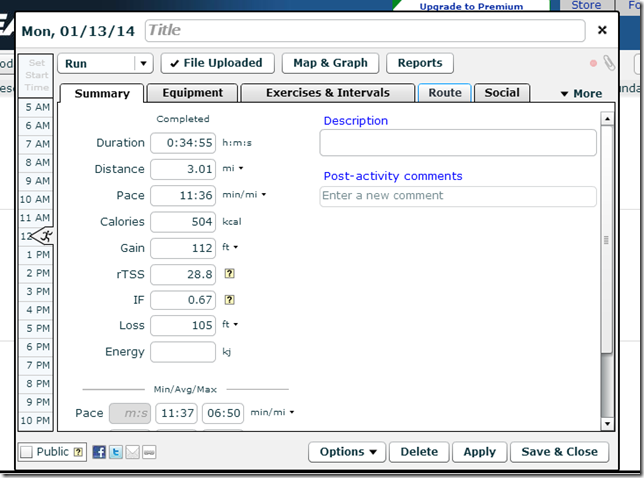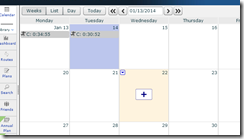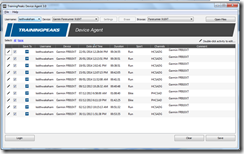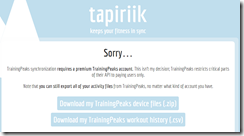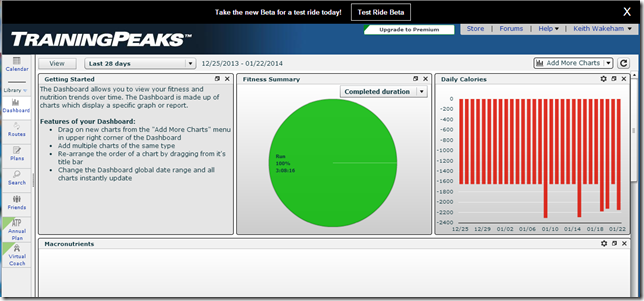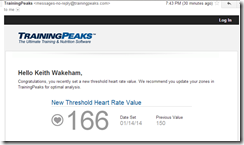Wednesday, September 10, 2014
4iiii’s Powermeter Promo Code + Story time
UPDATE: Code was valid until midnight of Sept 12. The last day of interbike. Thank you all that participated.
Now, if you’re still reading but want to hear how this came to pass, I give you the long story
During my Masters degree I had used strain gauges. I needed a tiny load cell to test active suspension. It worked but wasn’t great. I decided to take these “student strain gauges” for a side project. My FSA vero crank, instrumented like almost all crank based meters, showed some results, but it was noisy, drifting, and unusable. After much experimentation I found that cheap off the shelf electronics were not cutting it. I shelved the idea and started working on some training software for use with the regressed power curve of my Kurt Kinetic. That was 2009 – 2011.
In the meantime a friend of mine in Waterloo was doing a Masters with someone at Babcock and Wilcox, the nuclear steam generator company, and passed off my resume. Five interviews, a security background check, and relocating my life from St. John’s, NL to Cambridge, Ontario I was now working in Nuclear Engineering. Most of my work was Finite Element Analysis, or FEA. Essentially I my intuitive understanding of how mechanics, stress, strain, deformation, etc work was being put to work for steam generators. I had been using FEA since the second year of my undergrad and at that point had used FEA on and off for almost six years. I even wrote a free book on using Ansys and FEA to design race car chassis' (link here).
It wasn’t long before a customer concern required experimental work measuring strain. Prior work was inconclusive. I heard the design manager going cube to cube in cube-ville (which was my home) and I ran after him (coffee in hand) and said I know a and used strain gauges, Eventually I disclosed my electronic hacking which had been featured on Hackaday and I was chosen as the ideal candidate.
However, I needed credentials. Everyone knows most engineers never touch things with their hands, but in order to do strain gauges I would. I’d add it to my machining and welding skills. So I was sent to a strain gauge course. After the courseof training later I knew exactly how to fix my vero crank powermeter! I was excited beyond belief. The problems I had seen were so minor!
For the next year I spent most of my time conducting experiments at B&W using strain gauges to great customer satisfaction. Between my FEA, electronics, and attention to detail combined with my knowledge of Design of Experiments and higher level statistics my work was deemed impeccable in execution. I was achieving 1% error with theoretical. A former Pratt and Whitney employee now at B&W stated his work was up to 15% error. I was so proud to be executing things at such an accurate level. In the mean time I had spent thousands of dollars and countless hours building up my own circuit boards and instrumenting cranks.
Vero, which was never self contained, was V1. Later a C-channel shaped SRAM Rival was V2. It was arduino pro micro based with an AP1 ANT+ stick from sparkfun and some analog components that weren’t suitable. V3 combined those onto a Rival OCT (hollow forged) crankset. However there was issues, clearances, etc. I had tried some different ideas and realized forces on a crank aren’t as simple as the industry thinks (or markets). However, I got my powermeter on the famed Hackaday and tens of thousands of visits to my little blog later I felt I was on to something.
So for V4, I moved to a lot of new components and a small custom board. I spent countless hours pouring over datasheets to chose the components. I built both a Rival OCT and Carbon S900 / Quarq unit. Both worked well. Very well. In fact I was on the verge of building up a bunch and starting to beta test. I had a listing of people who were interested from all over the world.
I got an email from the father of a lady who works at 4iiii’s. He was so interested in my work and has remained a strong believer of me. Eventually it seemed to fall to the wayside of the people there or was being evaluated at a slower pace than I wanted. However I liked this company. The founder had built Dynastream, the creator of ANT+. I was impressed. So I eventually sent him a message on Linked In.
A few super early morning calls later and I was using my barely touched vacation time to impromptu fly to Alberta to meet this guy and his team with my bike in tow. I had no idea what to expect. A short drive from Calgary to Cochrane later and I find a small building labeled the 4iiii Innovation Centre.
I had mucked around adjusting code on the carbon crank for more accuracy and messed up some math, so eventually I swapped in my Rival the night before. The battery kept disconnecting during the demo in his office but he was convinced.
Some interviewing and a discussion later on what he wanted to bring to market and I was confused, full of reservations but generally sold. He wanted user installable. He didn’t want into the crank buying, installing, selling market. He wanted to let people have choice. He wanted to drop the price and change the game.
I spent most of the next 6 months working on the basics. Can it be done? What material? What gauges? etc. What I found was that 2% bending error was not actually achievable on a crank arm with the generally accepted setup (a bending bridge). If you narrow your scope to a fine window it does but that didn’t sit well, but if you start introducing some cases that fall to the edge of the norm just a tiny bit (and encountered regularly in mountain biking) you’ll find that it’s closer to +/- 7% to +/-9% on torque accuracy depending on the setup. Let alone rotational accuracy from an accelerometer algorithm.
I’m 4 months in, looking at these numbers thinking I’m a not going to be able to pull it off - not with the accuracy everyone is claiming! I quietly start looking for a solution. How do I make this better. I’ve figured out the fundamental issues with user install but how do meet the accuracy. It doesn’t change from user install to pro installed. I tried angling the sensors, adjusting things, compensating for the non-symmetric cross section of the crank. Nothing!
Then I tried something else. What about adding a second setup! Something that can sense torque but that is very different from the first. Then, using my Design of experiments mythology and statistics I figured out that there is a super cool correlation. I was blown away! This was big, this was the answer to my hopes to get me that 2%. Not only that, but generally gave 0.5% error! This idea is so revolutionary that we put patent pending in place on this technology, among many other things.
We needed to package it, and admittedly the packaging isn’t perfect for the drive side and the last few years we’ve seen a mess in bottom brackets and now we’re seeing a mess on the chain ring bolt patterns causing incompatibility of some manufacturers cranks. This is sad. However I’m glad to say the last 3 generations of Shimano 105 (5600, 5700, 5800) work, Ultegra (6600, 6700, 6800 {this is actually epoxied together!]), and Dura-Ace (7800, 7900, 9000) all work. The latest Deore XT works for the Shimano MTB front. The 10 Speed SRAM Rival OCT works (my original workhorse on the prototype front) and the X9 looks good. FSA Energy is good too but their new 5 bolt asymmetric and SRAM’s 11 speed put bolts where we want the sensor. We are still searching for a solution. On the Carbon front the SRAM S900 works but we haven’t finalized our testing. We will be recommending using the calibration load cell that comes with the kit every year at least to check calibrations depending on crank arm.
Right now the product works, but in my bosses opinion is huge physically, so there will be a shrink in size and weight when we ship in a few months. This will also improve install-ability and compatibility as well as easing access to the battery.
However, one of the coolest things I’ve done which I hope to open to the public is my test data on the existing meters. It turns out it my original bending only design was better than existing solutions but was still +/-7% while the best off the shelf solution once we hacked into it’s sensor produced +/- 9% when we introduces pedal offsets.
Enjoy the promo code while it lasts. It’s our gift to you guys who believed in me on a personal level and going forward believing that we change the face of power for serious athletes at all financial levels.
*gage is generally considered the American spelling and gauge the British form.
Saturday, May 10, 2014
Fat-hlete
Long time since I posted. Working at a young company is different. It’s vibrant and people are open possibility. For me it certainly helps with encouraging my goals of being a better… Fat-hlete?
Sorry? a what? A fat-hlete you say. It’s pretty self explanatory but it’s something that’s been on my mind as I try and achieve my weightloss goals and get ready for the triathlon season.
The above calculator has told me I’m not just overweight, I’m obese. That word is dreaded, sickening, unmotivating, hateful, and depressing all at once. Honestly, I think I’d rather it say “fatty fatty fatty” as a technical term than “Obese”. It’s a word that is feels foul. And emotionally, it can be devastating to people. So while people say “You don’t look like you’re 220lbs” or “You carry it really well”… there is one place where not showing it doesn’t matter. When you do any endurance sport – especially on a hill.
Being from “The Rock” I’ve ridden hilly, windy, and winding roads. Newfoundland can be considered a tough place to bike. RDF means rain, drizzle, and fog which is a standard day. A low humidity day is 78%, a high is 99% and it’ll linger and not rain. A calm day is 20km/hr winds. A windy day (that I’ve biked in) is 60km/hr gusting at 80-90km/hr. And it gusts! It’s generally so tough that the Vikings couldn’t handle it and left. If they had been tougher North America would have been populated Vikings and the descendants of Leif Erison. I like to consider myself tough, and honestly not that bad on a hill. I can dig deep and find power power.
A rough calculation can show that 1kg of extra mass up a 100m climb with human body efficiency is an additional (m*g*h/0.05) => 5kcal of energy. So 10 of that is 50kcal. That means it takes just about one bag of M&M’s to climb 400m climb with an extra 10 kilo’s. The 5% efficiency is just a guess. I remember the 10% food chain transfer from high school, and assume like a car, you push hard, efficiency goes down.
Sounds great. If I don’t eat that bag of M&M’s I’m down 200kcal and bam 1/17.5 of a pound lost. It’s not that simple.
What works for me
I don’t have too much recent data since I started logging again on a few weeks ago. However I used to log a lot and here is something really cool. Weight gain averages little more than 100kcal a day. In the recent “Unbalanced Job” I was trying to cycle, run, and eat right but I missed too may rides and runs and I ate out too much and seldom do a restaurant have any really good options. If stressed I’d hit a Starbucks for a mocha, then an mocha + a snack, then it’d be twice a day. The company also ditched the semi healthy cafeteria service for a vending machine. A VENDING MACHINE. Yet the company also would pay for homeopathy through health insurance. Who’s fault is this – mine and mine alone. But the interesting thing, is my body is on average packing on 100kcal worth of weight a day. I’ve heard this magic number before. I’m not 100% sure if the body craves that much or if it’s the max “efficiency” for weight gain.
Can you lose weight and still have those mocha’s and junk food. YES! That’s that first straight line in the more recent detailed graph. My life is more balanced, I am focused, but I was still eating junk. Over 2 months and 1.4kg lost. Compare this with 1.5 months and almost 5kg lost. Of useless fatty weight.
It sucks to lock down. You crave things initially. And bad. Soooooo bad. It’s torture. However there is a cool side effect. When I was 260lbs (about 6 years ago) I could almost eat a whole 18” pizza by myself or a 460g bag of Peanut M&M’s and be fine. I wouldn’t get sick. I’d feel guilty, sad, disgusted with myself and during the binge eating I lacked self control. However, I could physically stomach it. Fast forward, I was down to 195lbs and I couldn’t stomach a full bag of M&M’s or a hot chocolate from Tim Horton’s.
I’m not back down to that level, but I’m getting there. An no, I can’t stomach Tim Horton’s hot chocolate. It’s about 3 times too sweet for me.
Victim of circumstances?
No – you can’t blame your life, job, etc. It’s a contributing factor and sometimes it’s harder to compete with. If a job or an element of your life is destroying your health you have to determine if it’s worth it. If you ask me, no… Never long term sacrifice your health.
It’s harder to get back as you get older and then the possibility of kids, permanent disability, etc sets in. Having a single parent that died when I was 14 due to preventable heart disease – NO, you do not sacrifice your health. I warm my friends now of long hours of stress, and doing overtime. 40 hours a week is unnatural if it’s hated work, and 60 hours will probably kill you 20 years sooner even with vigorous exercise.
So here is my long term timeline:
2003 – University begins
Summer 2005 – First Engineering workterm, stayed with cousin who told me to go buy a Canadian Tire (department store) bike to get to work because they would not be driving me and I couldn’t afford a car. There was no public transit in a small town like this. Hadn’t biked really since I was a kid, but it’s a small town! Around 250lbs. Had been continually gaining weight.
October 2005 – Riding to work, a car waved me to cross by riding across a cross walk on a side road, kept going not realizing the cross symbol changed for the major road. Hit by a GMC Yukon. No Helmet and listening to an ipod. I am a helmet advocate. I was lucky, my head scraped the ground and had the Yukon been going a little slower I would have touched down with brain damage. If it had been going much faster I wouldn’t have just cleared the 4 lane intersection, I would have landed in the direct path of traffic coming in the other direction. I was lucky. I won’t ride with anyone who isn’t wearing a helmet.
Knee busted up (Arthritis setting in the last few years) but not broken (I’m tougher than Vikings, remember?). Broke my left big toe. Suggested surgery to reset it – they messed up my mailing address, too late to fix but honestly not bad. Did I mention tougher than Vikings?
Spring 2006 – Bought my Hardrock Sport Disc Specialized bike to replace my mangled one. Light biking, commuting, etc. No real rides longer than 10 – 15km. NL is hilly.
January 2008 – First workterm with General Motors in Oshawa, Ontario. I hit over 260lbs. However, it was a tough workterm where I would be walking around a plant six hours a day. I hated the job because it was so hard and there were days I didn’t have the thirty seconds to shove a sandwich in my face (union rep was the hugest asshole I’ve ever met, until I calmly told him I wouldn’t be putting up with his crap anymore – that’s how you get respect from and angry union rep. 90% of my people were amazing though.) I left this workterm at 220lbs. Terrible bus service meant if I missed the bus I’d walk 45 minutes home otherwise it’d be over an hour home via bus. I just spent hours everyday walking.
May 2008 – Returning from workterm I was complimented by my peers so much. Biking was easier. Still biked a bit, but not much, no real weight change.
September 2008 – Haven’t been able to lose weight. Returned to GM for my last workterm. Hoped it would be another 40lbs lost workterm. Didn’t happen. Left at 220lbs.
May 2009 – Bike trip to Europe. Not to lose weight, but cycled around London, to Cambridge, then Belgium and Germany. Not much compared to what I can do now.
Sept 2009 – Grad school begins. More biking. Bought my first road bike (GT Series 4, Low end, Sora components – and no matter what that one bike shop said. If you’re half competent you can maintain Sora shifting well. If you can’t, you’re not a good mechanic).
Jan 2010 – Wanted to do a bike race, but they didn’t exist in NL. My friends girlfriend was a runner, and suggested Triathlon as an option
May 2010 – First sprint distance Triathlon. Nearly died in water (near last), rocked the bike (+40 places), died during the run again (-17 places).
October 2010 - I started locking down on food, exercise, bought a Kurt Kinetic trainer for the winter. Started looking at creating a piece of software that had “virtual power” before Trainer Road did it right.
May 2011 – 2nd Sprint Distance Triathlon. Did well. Got down to the goal weight of 195.
Grad school stress sets in, looking for job, etc. I start to gain weight again. My diet had slipped a bit. Introduction of a few sweets / treats once and a while.
October 2011 to Dec 2013 – My “unbalanced job”. The job was good. I learned a lot. However it was not an enticing place to exercise (and other things). I had a lot of conflicting activities outside of work which meant healthy eating went out the window, exercise was compromised and my weight gain continued. There were several employee’s that made comment to my face ( and some while smoking directly next to the entrance of the building by the “No smoking within X distance” sign) – and not encouraging or positive comments. Later they hired more young people which made it more comfortable. However, it was not 100% conducive to being active at the workplace. Sticking me in an industrial park for 6 months without a shower or even sidewalks was a contributing factor in wanting to leave.
Jan 2014 – Present – New job working on sports tech. It means while I look ridiculous going for a run at –24 Celsius, the response is “awesome!” or asking if it was good, or commenting on how tough I am for doing it.
What’s your point?
I see people posting on Facebook / twitter / blogs about weight loss. Here’s what I see a lot of
- Naturally skinny people saying “don’t take advice from fat people”
- Overweight people feeling lost
- Overweight people have success but usually via spending a lot of money to a “coach”
- A handful of success stories, but then struggles to keep off the weight
So what have I figured out
- Refined sugar is the enemy of all. Figure out if other things are your specific enemy. Just because you aren’t allergic doesn’t mean you can respond poorly to some foods
- Life balance and support. It’s not good if you’re so time constrained that you can’t cook or eat proper meals. It’s also important to be around people who will lock themselves down and understand your goals. This is hard for a lot of people to truly support that
- Find a tracking method that works for you. I like to weigh daily. If I start inching up in weight it’s a red flag. I read “weight once a week”. I call BS on that. My weight can fluctuate 2.5kg from day to day with overeating and hydration. If you’re weighting weekly you can’t see that. Honestly that guilt snack you had might show up, guilt you the next day, and keep you way from another for a week. It’s probably unhealthy to rely on guilt, but I figure a little guilt about a snack is better than a lot about being overweight.
Sunday, March 23, 2014
ANT+ Weight Scales “Hack” (a start)
I haven’t written for the blog in a while. I still plan to continue the review process of tracking software but it’s fallen to the way side as I’ve been helping out with all sorts of projects at my new job, getting use to my new surroundings, and just generally trying to keep up with an exercise routine.
That exercise routine means that I’m getting more weight contentious. I like to refer to myself as a “tank of a person”. I’m not designed for endurance sports – my body takes more to things like weightlifting. So triathlon is fighting an uphill battle. I’m getting stringent on the diet side of things. I use to track my weight manually in an excel spreadsheet, but more and more pieces of software can track it as well along with my activities consolidating the data.
Garmin Connect is shown below. With a single data point based on this hack.
Essentially I wanted a Tanita BC-1000 or BC-1500 but as shown by DCrainmaker here in his comments, the ANT+ weight scale thing isn’t what he’d recommend. Sadly, I think he’s right, mainly because of the use case. It’s nice if a watch can track, but the FR910xt isn’t designed to be worn all the time. My FR60 was, but it didn’t do powermeter data.
Since I’m not in the mood to spend that much on a scale, I figured I’d toy with some things first. Mainly the goal is a cheap digital scale, connect it to the nRF51422 and voila – a basic ANT+ scale. It won’t do body fat measurements, but its a start. Eventually I may look at a Withings or Aria solution.
I’ve skimmed the data sheet from www.thisisant.com so I’ll just dive in.
There is suppose to be a bunch of two way communications back and forth but it’s not necessary for basic weight. Essentially the scale spews weight and the watch will get it. I throw the ANT+ sensor simulator into weight scale mode. It starts transmitting data. I can set it to computing, invalid, or a weight and set the weight in 2 decimal increments. No idea what the watches will record.
Page 2/3/4 contain the other information like hydration, body fat, metabolic rate, and mass of muscle and bone. I noticed when I tried this with the FR910xt that it just received the data, but the FR60 immediately sent data back to the sensor simulator for my activity profile. I think this is to try and support multiple people and the scale can use the height and age in the BIA calculation for body fat.
Interesting. Some pictures showing how to turn on ANT+ scales on on your watch. First the FR910xt:
Here is the trick. I had to actually check the manual. Press the power button and it’ll start scanning for the scales! I spent a few minutes feeling like an idiot here.
I noticed that if I changed the software up or down while in this view, so did the value on watch screen. I haven’t experimented yet with what is recorded on the watch.
Now with the FR60. The menu setup:
And here is the FR60 Trick. Hold the light button for a couple of seconds and it should show up scanning.
The next step is finding a scale to disassemble. Also I stumbled onto a great Texas Instruments part that came out recently, the AFE4300. It’s an analog front end to measure strain gages (for weight), an AC current driver to drive current from one foot to the other through the body, with a differential voltage input to determine Bioelectrical Impedance all in the same package. Dev kit is 200 dollars, so that’s probably not the right solution and the chip is a QFN I believe so I’m not keen on trying to wire it up. However, if I wanted to make a scale it would be a good starting point. so I’ll probably be doing it Nordic DK board + sniffing the data lines from a scale or interfacing to an old Accuity board that I have kicking around for basic weight.
I kind of wonder if there is a BLE profile for weight scales.
Tuesday, February 18, 2014
Check Spoke Tension with SmartPhone
Just a quick video using an app. I tried gStrings, a guitar tuner but the"Check Spoke" App (here) had better filtering for frequencies and added regression if you know the length, diameter, and material of your spoke.
Haven't checked to see if there is a good iOS equivalent yet, but I'm sure there are guitar tuner apps. Just match the frequency of the spokes, if a spoke it way off you might adjust it down. Keep in mind there is a balance between a true wheel and good spoke tension. If you aren't careful you could mess up how true your wheel is to fix the spoke tension, or more commonly, the spoke tension is messed up to fix the trueness.
Saturday, February 15, 2014
Training Peaks Beta
So first I want to admit that the beta has actually done a very good job addressing the upload issue. Seen below is the Google-esque drag and drop into browser to upload feature. Seriously pretty cool. I uploaded several of my workouts like this.
However, Training Peaks did reward my frustration with their older site with and upgrade to Pro for a week – which means tapiriik sync functions (at least until the trial expires / when I pay for a month it expires). I’m quite happy about this, and as Ray over at DCrainmaker commented, I shouldn’t get too upset about lack of API’s. Garmin doesn’t officially have one and has been throttling tapiriik.
The Beta, having addressed my upload issue, is going to be the focus. I firmly believe that a company isn’t going to stop developing a web app, so honestly they are really perpetual beta. I think for Training Peaks has alegacy group to support though. I’ve seen this in Mechanical Engineering software Catia. They have a version+revision system (such as V5R18 which stands for version 5 and revision 18), however while releasing new revisions of V5, they are concurrently building V6R7. It has to do with projects that are too big for a company to switch at one time and allows them to make great changes without alienating their customer bases.
The first thing you might want to do (Unless you live in the US) is that you’ll likely want to click on your name and go into the settings menu and fix the default from miles to kilometers and the date to DD/MM/YY. I have opinions on the Imperial versus Metric, but this map sums it up better than I can put into words.
In the settings you’ll find something really cool but nerdy stuff. For instance there is a Workouts / Meals Calendar sync link. You can sync your Outlook or Apple Calendars to TrainingPeaks. This is a first from what I’ve seen and something that I desperately want to trial though haven’t had a chance to set it up.
Additionally this is where you’ll set your Heart Rate zones (via manual input, or many varieties of calculations based on a small amount of inputs). You’ll likely need to do a bit of research or examine your previous files going into adjusting these.
You can also go into the equipment tab, but honestly I’ve never seen much point to equipment tracking. I like that it has it, but I just don’t see it as beneficial. I mean some people will love to track shoes distance for replacement purposes, but for cycling I find a keen eye on your bike and checking it is going to be more effective than trying to manage it via a software solution. I’m likely unique in that I do all my own bike building and maintenance and I would suspect that the vast number of cyclists do not. It certainly has other use cases, such as differentiating mountain from road bikes.
So now that the basics of setup are out of the way it’s into the Calendar view I go. It’s a clean interface – I like it a lot better than the previous one (which I’ll stop mentioning now). It seems to automatically default to today on the top row, which means you have to manually scroll up to see last weeks work outs. At first I didn’t like this, but it makes a lot of sense from the perspective of seeing your upcoming plan – the dashboard is where you’ll look at old data in a big picture kind of way so this makes sense.
Over to the dashboard we see something similar to SportTracks.mobi with the pie charts.
Click on the little tab on the top left hand corner and you get a list of some really well thought out graphs, yet I’m not overwhelmed by the number. You simply drag and drop them where you want them. It provides me with very useful graphs within seconds. It’s clean and smooth (even on my older underpowered laptop which is super nice).
The only major complaint I have is that it feels very much built for a higher resolution display. If you’re running a 1366x768 (the most popular resolution by a 3:1 margin for Jan ‘14) then consider an upgrading your laptop(to maybe a Lenovo Yoga 2 Pro maybe if you want 3200x1800) as you’re not going to see anything more than two graphs at a time. Forcing my browser to zoom helps with the graphs but becomes a real problem for the text. It would be nice if there was some scalability of the sizes. This may be a short lived issue as almost every screen is going to be higher resolution soon in the mainstream over the next two years. However, then it’s the flip side, how well will it cope with a 11.6” quad FHD screen? So I would like to know how it deals in the opposite direction – the ultra high resolution screens. I suspect this is eventually going to be handed to the OS’s in the future, at least I hope.
I don’t know if it’s maybe just my personal preference but I honestly really like the colour scheme. Another thing to note is that using Training Peaks logged in on two systems and making changes to the Dashboard on one system means a refresh will get the new stuff to show up on the other. I don’t know if that was planned, but it works.
One of the things they have done well (which is a port from WKO+) is the summaries. I really love this summary type. It breaks down my last few weeks, then breaks down the last few months below it. It’s a mental thing I find; you aren’t going to remember that run six weeks ago, but you’re going to be fairly fresh about your most recent workouts. However you’ll want to see how you’re progressing on a month by month basis. Since I have a major cycling focus the 5s, 1m, 5m, etc powers are important. It gives you at the second glance.
Something I find even more important than that is the Performance Manager. This is the graph that will give you your TSS, intensity factors, TSB, etc. It’s a great view which I wish more sites would replicate.
The level of customization goes deep with CTL and ATL constants. This is something I never got into before, but it makes sense to be adjustable because two people could have very different recovery times. Some people may recover faster than others and some slower. This is something that I’m inclined to leave alone mainly because I suspect changing it requires a combination of coaching and training experience with very good feedback or potentially long term testing. I’ll go out on a limb and guess that Training Peaks have selected the median values and you generally won’t need to touch them.
I’ve done some basic exploring. Mainly looking at my workouts. At first I wasn’t keen on the pop up windows but the more I used them the more efficient I felt they were. They gave me everything at a glace and I didn’t have to constantly navigate pages. It’s different, and if you walk into it with an open mind you’ll appreciate the workflow.
Some of you might have seen me post about my old trainer software (which was before TrainerRoad, and now, not nearly as good – seen here). I designed it to save files in a Powertap replicated format. However it left the ID field blank, but manually rectifying this (place 0’s in the field) meant that Training Peaks Beta could read them – dragging and dropping them put the file on today’s date. I’d like it to have popped up asking for these time and date missing files should go – but I’m generally just impressed that it worked at all.
Since the CSV file has no true time stamp information (I save them automatically by date, but that doesn’t count as real meta data) there is a nice way to edit them. Opening the workout and clicking on the date produces the very familiar month menu’s. These are generally quick and easy to work with, unless you’re trying to upload a workout many months ago, but at that point it’s impact to CTL is so negligible that it’s mainly only for historic significance. If you really want to explore that old CSV power file from 3 years ago you can. It’ll just be a bit of a pain to get the right date but it certainly lets you.
All in all, the beta is what I should have looked at first.
I’m exploring implementing my workout plan and I’m bumping into a couple of limitations of the beta. It seems that plans can be added from the store in the Beta, but not manually. However a plan is just a series of workouts. So I went to the workout library and found my first limitation of the beta. Adding a workout has not yet been implemented. So with great hesitation I figured I’d switch to classic temporarily to see if it’ll show up.
However, I’m stopping there as I don’t want to review the “Classic” interface. I plan to put my plan into it and since Joe Friel is closely tied to Training Peaks as well it has an automated interface to put in a plan.
Cost
Training Peaks is the most expensive online tracking platform I’ve found at $20/month USD. I like subscription models for two reasons
- Cost of access is reduced
- Ensures Developers keep working on new features to be competitive
Being the first paid piece of software that I’m looking at, it’s hard to say if it’s analysis features make it worth the money. I’m still researching TRIMP as a tracking method compared to TSS so I can more accurately compare feature sets between different Web apps.
Bottom line (so far)
If you’re new to Training Peaks don’t bother with the Classic interface for tracking your work outs and analyzing data – however, unless you buy a plan you’ll be forced back to Classic to input yours. Hopefully this will be fixed soon.
Pro’s
- The drag and drop to upload feature, very good functionality
- Dashboard – simple,effective, and customizable – great historic graphs and listings
- Can do a rTSS calculation for running, making your runs automatically useful for tracking training stress scores / balance
- Interface and navigability in the Beta is much better than the Classic interface
Con’s
- API for Tapiriik syncing only available in paid version
- The drag and drop to upload feature is not intuitively know – I had to be told about it
- Not everything from the older “Classic” interface hasn’t been ported
Saturday, February 8, 2014
TrainingPeaks (Free Version)– A Frustriduciton
Continuing on the reviews, we’re going to move onto Training Peaks. As previously alluded to, they are widely considered the Masters of training and racing with a powermeter. Their offline software, WKO+, has been used by major coaches all over the world.
As with SportTracks.mobi, there is things that I didn’t have a chance to look at and missed. However, I plan on updating things further when I figure them out. There are some issues with Training Peaks that make the user experience painful. I’ve used a demo of WKO+ 3.0 before and I’m very excited about 4.0 even with what seems to be never ending delays.
Training Peaks Online
Training peaks is strongly associated with Hunter Allen and Andy Coggan, the authors of Training and Racing with a Powermeter. This is the book I previously recommended. They are coming out with a new version of their offline software, WKO+ 4.0 and have been running webinars about some “Black box” physiology math.
What I mean is that you give it your input (your ride / test data files) and it gives you back and output such as telling you your FTP has increased, decreased, etc – but it neglects to tell you how or why. I’m a big fan of open source hardware and software which is where the beginnings of this blog originated and will continue to support in various projects. Feel free to make your own comments and share your opinions on Black Box technology. Personally, I feel disdain for it.
So onto the web app. This is the first page you’ll see: It gives a nice calendar view which provides a great history. You can switch to weeks, list and day views. You’ll notice I don’t have any data here – we’ll try and fix that next.
Let’s upload some data to Training Peaks. It is seamless with Garmin Connect, SportTracks and Strava, and others I’ve tried – and maybe this is because I have two of the most popular devices (Garmin Edge 500, Forerunner FR910xt). So I need to find that pesky upload button. It doesn’t seem to be on the main page (or every page on almost every web app I’ve tried). After a little searching I figured this is because they are focusing on the new beta page and maybe this is a legacy thing. I assume that the new beta page will have an upload button in the corner.
Still no upload? I have barely ever read a manual in my life, and I’ve never seen it required with a web page. However, I’m getting seriously frustrated so I’m consulting the help file
I read that my options include:
- WKO+ Desktop software (I’m looking at WKO+ 4 purchase whenever it comes out), but the whole point of a web app is access everywhere and not having to install software on every computer
- TrainingPeaks Device Agent – Seriously? I already have the Garmin ANT+ Agent, I need another one! Strava can upload via the Garmin Communicator plugin, this is more than surprising.
- Upload from Quick View – File upload; I’ll tired this first. Why is this practically hidden?
- Upload from the item picker – Again, file upload like above. Again, nearly hidden!
I’m trying method 3, upload from Quick View. I click on a day (the wrong one – intentionally, because I want to see what happens – the .fit files have embedded time and date stamps as well as GPS data) and I’m manually uploading:
I specified Jan 13 and tried forcing Jan 22’s run.
So now I’ve put the 22’s run on the 13, the 20th’s run on the 14. Not a single issue here doing it. It didn’t pop up, or alert me, or just override my choice. Curious.
I have a huge issue with this. I want the ability to override things, but in the day of web apps and GPS watches / cycle computers / smart phones where time and date are set via GPS or Cell tower data I shouldn’t have to specify the day for each file. I can manually upload to the Garmin Connect site with the communicator plugin. So lets put this all right in terms of the dates. I’m downloading the Device Agent.
From the help page link I’m confronted with a 404.
However, finding it via Google to a live link on their site I download the TrainingPeaks Device Agent 3.0 and install it. Once open I select the Garmin Forerunner 910xt and click open files (That’s questionable; why not upload?).
I’m shown a listing of files in the Garmin Folder. I’m confused to say the least. I downloaded a Device Agent to talk to my device, which I have with me.
WOAH! Hold on now!!!! It is just linking to my files on my hard drive that would only be there if I used the Garmin Agent. I’m not even 100% sure that Sporttracks or Strava doesn’t do the same for ANT-FS based devices, but it does it without me thinking. With the Edge 500 they both talk directly to it (because it shows up as a drive, the FR910XT needs to use ANT-FS)
This TrainingPeaks Agent didn’t communicate to my Device via ANT-FS to get the fit files directly from the device, it went to the Garmin folder for the Garmin ANT Agent. This is a hack / cheat / workaround if I ever saw one – and having “Hack” in the name of my blog means I love hacks – but why did I have to download a piece of software to do this? If I didn’t have Garmin ANT+ Agent installed and uploaded to the Garmin Connect site via the Agent method then it sounds like I couldn’t use the files. Maybe others are using this cheat too, but I manually had to select the files to upload via the web interface (one by one) and tell Training Peaks when they happened unless I use the Device Agent – whose only benefit is to read the time and date and put it in the appropriate date.
I want to quickly visit the top bar of other sites though.
And Training Peaks has an “Upgrade to Premium” button instead. Even the Beta has a big upgrade and not upload button.
As a reminder, tapiriik doesn’t work unless you upgrade.
After this frustration fest I now have data. Lets look at the Dashboard. I’m starting off in negative calories which is concerning but I assume I need to put in dietary information.
It’s giving me very little in terms of summary. It’s highly customizable though which is similar to WKO+ 3.0 which is nice. However, nothing is setup as a default to give me summary data.
You might be asking why I’m giving TrainingPeaks a hard time on this. The simple reason is that their desktop software was one of the first and widely considered the best, and they’ve spent a lot of time migrating almost all of that functionality to the web because it needs to almost fully complement WKO+ for the WKO+ desktop to web app uploading, but they seem to have forgotten that web apps aren’t just straight desktop translations and that their customer base have $200 – $1000+ in hardware that they want seamless integration and are given that with almost all of the competitors.
I like Specialized Bikes motto: Innovate or die.
Something cool happened after I had data into the site. I got an email notification when an algorithm detected something – though still not a fan of Black Box Algorithms but I did like the nice clean email that notified me of this stuff.
Bottom line:
Honestly, this has been the most frustrating web apps to track my data that I’ve seen. I’ve spent way more time on this site than any other and found I was quickly going nowhere. I desperately wanted it to work well and I tried and tried. I wanted the kings of power to help me analyze my training plan data going forward, but I found I barely had data into their site. If you’ve more experienced with WKO and their products, it might be easier since you know the tricks to make it work – but my point is that the competitors “Just work”. If you’re new to tracking your data, this experience will leave a bad taste in your mouth.
Pro’s
- Customizable everything, from charts, dashboard, etc
- The “experts” in power
Con’s
- Actually using it
- Getting your data in
- Upgrade instead of Upload
I’m hoping I’ll come back to it when I upgrade to Pro so that:
- Tapiriik works – Seriously that is a laughable childish money grab rule to make your API only work on the paid version. Garmin works, Strava works, Dropbox works, and more
- I can explore all my historical data
- Explore annual training plan – apparently also a paid feature
However until then I feel I’ve invested too much time already. If you can’t just switch on and start using something like this, you’re doing it wrong. It’s hard to give money to something that doesn’t work well in the unpaid version, it’s a fools errand to follow through on a paid version hoping it’ll fix that.


